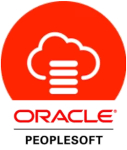 PeopleSoft – Authorization Error – Contact Your System Administrator
PeopleSoft – Authorization Error – Contact Your System Administrator
Last week I was on a call with a client who had Oracle in doing a “free” assessment, which in my opinion was a giant sales pitch. Interestingly there was many nuggets of gold to be had if you were listening which I will share in other posts. However, one item that was brought forth was that they should have performance monitor installed because it is just awesome! In all the years of doing PeopleSoft have not had many opportunities to work with PPM or PerfMon or Performance Monitor depending on how you want to reference it.
It is not terribly difficult to setup, however, it is literally a separate application, so it has its own database, application server, process scheduler and web service. So this turns into more maintenance and most organizations don’t require the tool for the cost and understanding of getting PerfMon in place.
When doing the install you need a database that has PeopleTools framework, so the easiest way to get that is to install a PeopleTools System database. When doing the install, you should not that the core user is “PSADMIN” not VP1 or PS. When doing the install everything was fine, except when I tried to login I got the Authorization Error message with NOTHING else. I checked the logs and looked at security and did not see much of anything wrong. So it was time for the secret weapon: my oracle support, and searching we go. Since this is a highly generic message it is difficult to determine what the cause was, all the usual suspects did not seem right. At the bottom of one of the case notes it suggested to make sure you had the correct license code.
This install was doing using a PeopleTools Home that we did not originally install, we inherited the mess from somebody else, so when I looked, sure enough it had he strangest looking license code I have seen yet in my PeopleSoft career. So I popped out to the PeopleSoft License Page and I got the correct license code and inserted that into the PSOPTIONS table. After a quick restart of the application server – eureka!